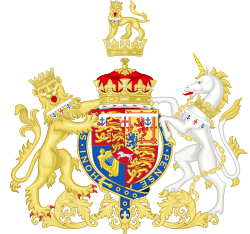| Dukedom of Clarence and St Andrews | |
|---|---|
 Coat of arms of William Henry, Duke of Clarence and St Andrews, used from 1801–30 | |
| Creation date | 20 May 1789 |
| Created by | George III |
| Peerage | Peerage of Great Britain |
| First holder | Prince William Henry |
| Last holder | William IV |
| Remainder to | Heirs Male of His Royal Highness's Body lawfully begotten |
| Subsidiary titles | Earl of Munster |
| Status | Extinct – Merged with the Crown on succeeding as King William IV |
| Extinction date | 26 June 1830 |
Duke of Clarence and St Andrews was a title created in 1789 in the Peerage of Great Britain for Prince William Henry (later King William IV). [1] He was also created Earl of Munster in the Peerage of Ireland at the same time. [2]
Contents
While there had been several creations of Dukes of Clarence (and there was later a Duke of Clarence and Avondale), the only creation of a Duke of Clarence and St Andrews was for Prince William, third son of King George III. When William succeeded his elder brother George IV to the throne in 1830, the dukedom merged in the crown. The title refers to ancient castle and honour of Clare, Suffolk; and the Scottish city of St Andrews. [3] [4]
